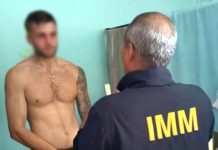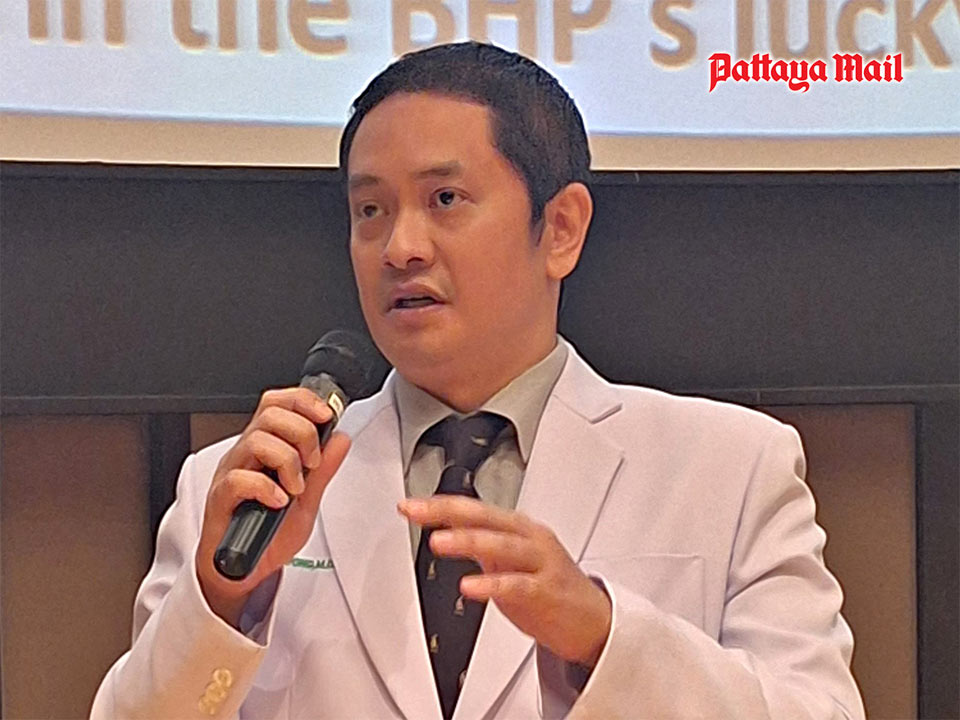
PATTAYA, Thailand – Knee and hip problems are common among older adults, affecting their mobility, quality of life, and independence. Some of these conditions may require surgery and rehabilitation to restore function and reduce pain. Depending on the severity and type of the knee or hip problem, different surgical options may be available. After surgery, rehabilitation is essential to help the patient recover and regain function.
On Wednesday, May 8, two doctors from Bangkok Hospital Pattaya (BHP) gave a presentation to the Pattaya City Expats Club. Dr. Nammon Yaikwavong, Orthopedic Surgeon, began by explaining what these hip and knee problems consist of, their diagnosis, and treatment available including surgery. He was followed by Dr. Natchai Jitthamvanich, Rehabilitation Specialist, who described the aftercare necessary when one has knee or hip surgery.
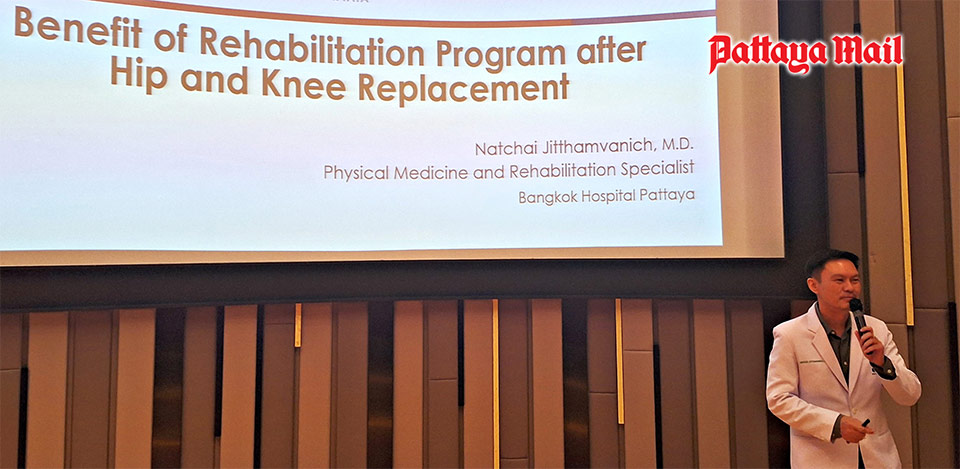
Dr. Namon explained the common symptoms, causes, and treatments for knee and hip joint problems. Dr. Namon said that hip problems are related to the anatomy of the joint, which differs among races. Europeans tend to have more abnormality in the femur, which causes impingement and degeneration. Dr. Namon advises that people should do muscle strengthening exercises and activities that are suitable for their condition; keeping active and fit can help delay the onset or progression of hip problems.
Primary osteoarthritis is caused by aging and wear and tear of the joint, while secondary osteoarthritis is caused by anatomical deformities or trauma. The diagnosis is based on the history, symptoms, physical examination and X-ray. The X-ray can show the reduction of joint space, bone density, and bone spurs.
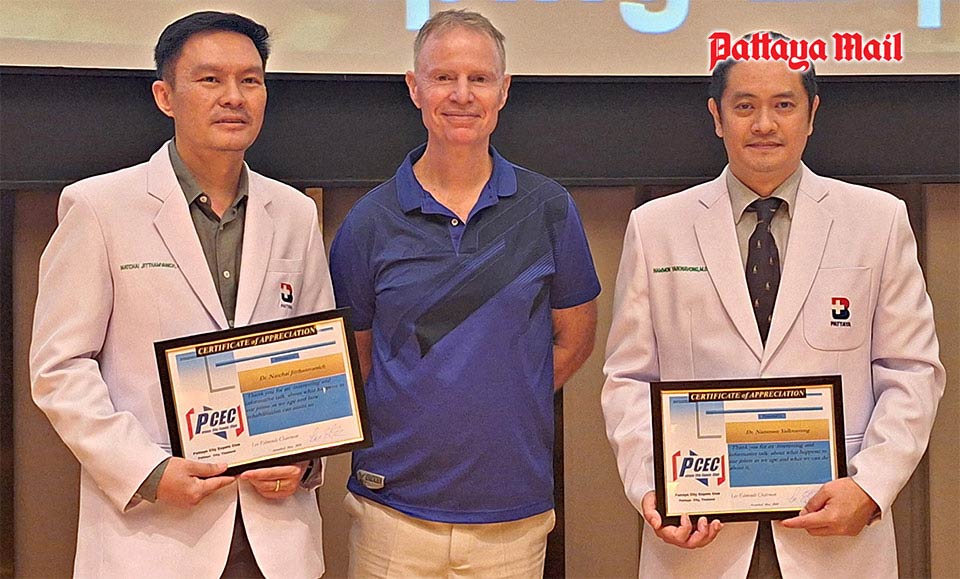
There are non-drug treatments which include weight reduction, aerobic exercise, functional rehabilitation, walking with cushioned shoes or canes, and avoiding activities that stress the joint. Drug treatments include analgesics, such as paracetamol, and non-steroidal anti-inflammatory drugs, such as ibuprofen. Cortisone injection can also be used to reduce inflammation and pain.
The last option when the non-drug and drug treatments are not effective is total joint replacement, which involves replacing the damaged joint surfaces with artificial implants. The stages of hip and knee degeneration are graded from 1 to 4, based on the severity of cartilage loss, joint space narrowing, bone density, and bone spurs. Stage 4 is the most advanced stage, with severe pain, stiffness, and loss of mobility.
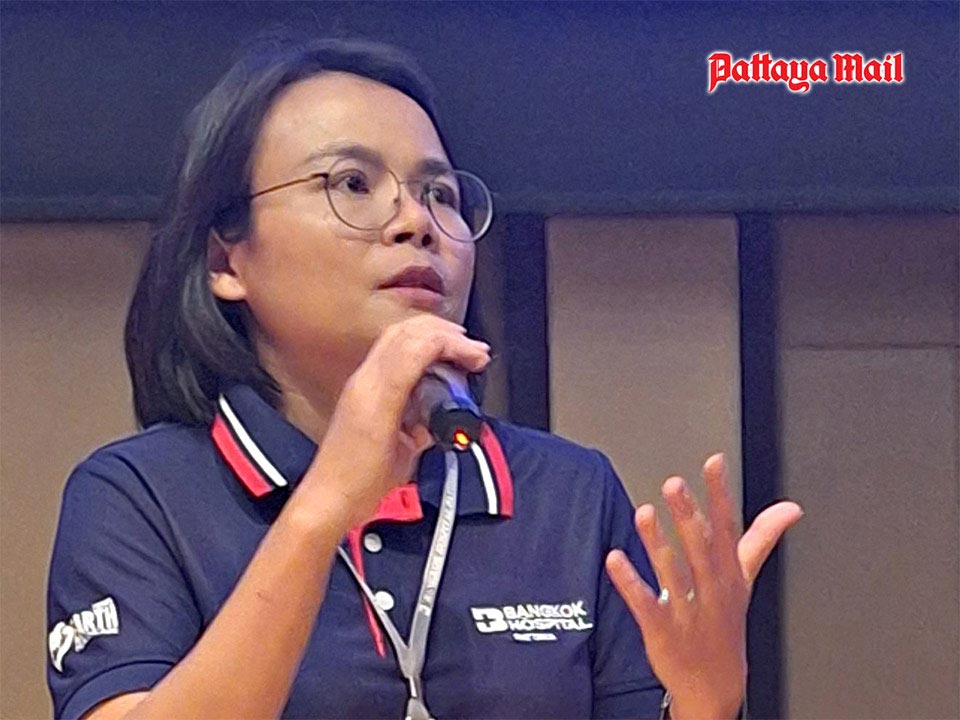
The hip joint is a ball and socket joint, composed of the femoral head and the acetabulum. The knee joint is a hinge joint, composed of the femur, tibia, and patella. The joint surfaces are covered by cartilage, which provides smooth and cushioned movement. Dr. Namon described hip and knee replacement surgery which involves replacing the worn-out bone and cartilage lining your hip or knee joint with new implants that are composed of artificial materials.
Dr. Natchai then spoke about rehabilitation therapies for patients who have had surgery. The patients are mainly concerned about pain, mobility, recovery time, and quality of life. The doctors are concerned about infection, complications, range of motion, and functional outcomes.
Rehabilitation starts from the first or second day after surgery, with pain control, range of motion exercises, and walking training. The pain usually lasts for less than two weeks but can be longer if there are muscle problems. The patient needs to avoid certain positions that can cause hip dislocation or knee stiffness. The rehabilitation equipment used includes laser, ultrasound, short wave, and continuous passive motion machine.
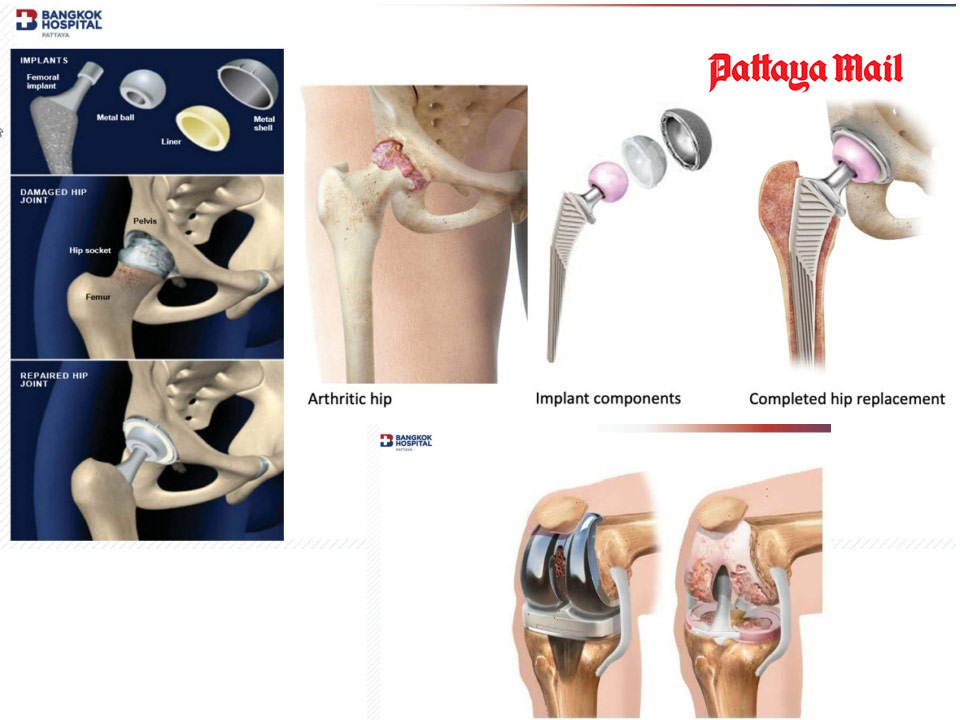
Muscle exercise is crucial for protecting the joint, preventing dislocation, improving walking pattern, and delaying degeneration. Dr. Natchai demonstrated some exercises for the hip and knee muscles, such as leg extension and squat. He also noted that balance training is important for preventing falls and improving your body’s ability to sense movement, action, and location. He suggested some activities such as yoga and tai chi for enhancing balance and flexibility. Dr Natchai emphasized that rehabilitation should not only start after the surgery, but also before. The prehabilitation can help the patient to have a better muscle strength, endurance, and range of motion before the surgery, which can improve the recovery and outcomes. Further, the results of the surgery and rehabilitation depend on the patient’s previous condition, activity level, age, and compliance.
Following the presentation, Ornuma (Jeez) Tamboon from BHP’s International Marketing Department conducted a “Lucky Draw” with several vouchers for use at BHP being the prizes. MC Ren Lexander then brought everyone up to date on upcoming events. To learn more about the PCEC, visit their website at https:/pcec.club. To view the presentation, visit the PCEC’s YouTube Channel at https://www.youtube.com/watch?v=4Gn2dJqBuYU. After the presentation, MC Ren Lexander interviewed Dr. Nammon about his presentation. To view video visit https://www.youtube.com/watch?v=jDyGe86q4Z4.






